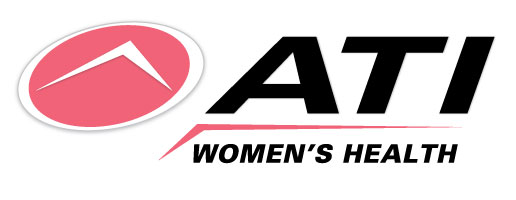Pregnancy Care and Postpartum Physical Therapy
ATI Women’s Health physical therapists have advanced, specialized training in the management of musculoskeletal conditions during prental and postpartum that may lead to pain and dysfunction.
Find a Location and Get Started
During the prenatal period, physical and hormonal changes occur, which can affect the musculoskeletal system. These changes include altered posture, shortened muscles, potential muscle imbalances, as well as changes in spinal mobility and bony alignment.
During the postpartum phase, fluctuating hormone levels combined with additional physical changes as a result of delivery may also result in musculoskeletal concerns, such as excessive joint mobility, potential muscle imbalances, weakness of the core stabilizers and altered spinal mobility and function.
Diagnoses treated by ATI Women’s Health (but not limited to):
- Pelvic girdle joint pain (sacroiliac, pubic symphysis, sacral and coccyx joint dysfunctions)
- Lumbar/low back pain (including lumbosacral nerve root irritation/sciatica)
- Upper quarter conditions (carpal tunnel syndrome, tendonitis and thoracic outlet syndrome)
- Cervical/upper back pain
- Muscle spasm/myofascial pain (piriformis, gluteal, paraspinal, abdominal musculature, etc.)
- Pelvic floor dysfunction (weakness, pain, improper neuromuscular control and/or incontinence)
- Diastasis rectus abdominis
- Core weakness
- Episiotomy scar pain
- Cesarean scar pain
- Pelvic organ prolapse
How can prental/postpartum physical therapy help?
The goal of physical therapy during pregnancy and postpartum periods is to address spinal and pelvic joint dysfunction, instruct in exercises to address muscle weakness and imbalance, as well as provide guidance and instruction related to modification of ADLs that may be difficult during these phases of life.
Treatment options vary by condition and may include:
- Muscle energy techniques to realign the pelvic girdle joints and lumbar spine
- Soft tissue mobilization and gentle joint mobilization during prenatal phase
- External/internal soft tissue mobilization, scar mobilization, visceral mobilization and/or joint mobilization during postpartum phase
- Pelvic floor muscle neuromuscular re-education, coordination and strength training
- Lumbopelvic stabilization exercises and core strengthening program
- Postural strengthening
- Diastasis recti correction
- Optimal body mechanics education
- Modalities as appropriate pending prenatal/postpartum status (moist heat, cold therapy, electrical stimulation, ultrasound)
- Pregnancy support belt fitting and dispersal
- Self-management strategies to expedite transition to home program
